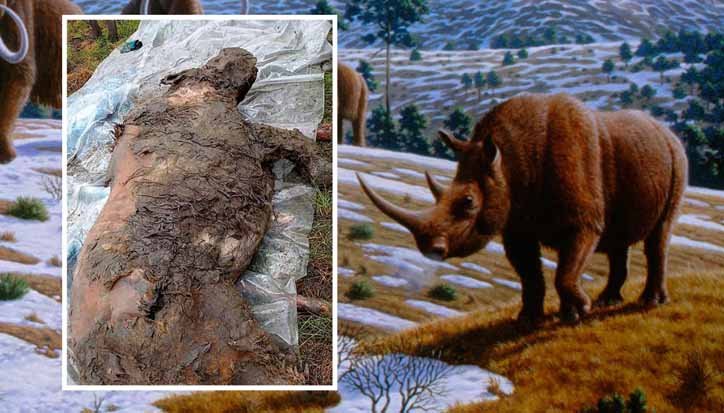Researchers Find 50,000-Year-Old Frozen Body of Extinct Woolly Rhino in Siberia
Researchers in Siberia have stumbled upon the 50,000 year-old remains of a rare woolly rhinoceros that was trapped in permafrost.
The remains of the woolly rhino were excavated from the Abyisky district of the Sakha Republic. The rhino was first discovered by a local in Siberia named Alexei Savin, Business Insider reported.
Savvin stumbled upon the remarkable find walking near the Tirekhtyakh River in Yakutia, Siberia last August.
It’s worth noting that this woolly rhino was found close to the site where a previous baby woolly rhino named Sasha was discovered back in the year 2014. Woolly Rhinos were once believed to have been prevalent in Europe, Russia and northern Asia thousands upon thousands of years ago until they ended up extinct.
Paleontologist Albert Protopopov of the Academy of Sciences of the Sakha Republic unveiled that the baby woolly rhino would have been approximately three to four years old when it died presumably from drowning.Rawalpindi Millionaire Mom Exposes How to Make Lakhs Per Month from HomeDaily NewsAdventure Activities to Try in Gap YearViral Vacation IdeasAds by Revcontent
The only other woolly rhino thus far that has been discovered in these regions — Sasha — was dated to be from around 34,000 years ago. However, Protopopov suggests that the newly discovered body could be anywhere from 20,000 to 50,000 years old.
However, despite the body being there for so long according to Protopopov “among other things, part of the internal organs are preserved, which in the future will make it possible to study in more detail how the species ate and lived.”
Protopopov further added, “Earlier, not even the bone remains of individuals of this age were found, not to mention the preserved carcasses of animals. As a rule, these were either cubs or adults.”
A fellow paleontologist Valery Plotnikov from the Academy of Sciences further adds, “We have learned that woolly rhinoceroses were covered in very thick hair. Previously, we could judge this only from rock paintings discovered in France. Now, judging by the thick coat with the undercoat, we can conclude that the rhinoceroses were fully adapted to the cold climate very much from a young age.”

